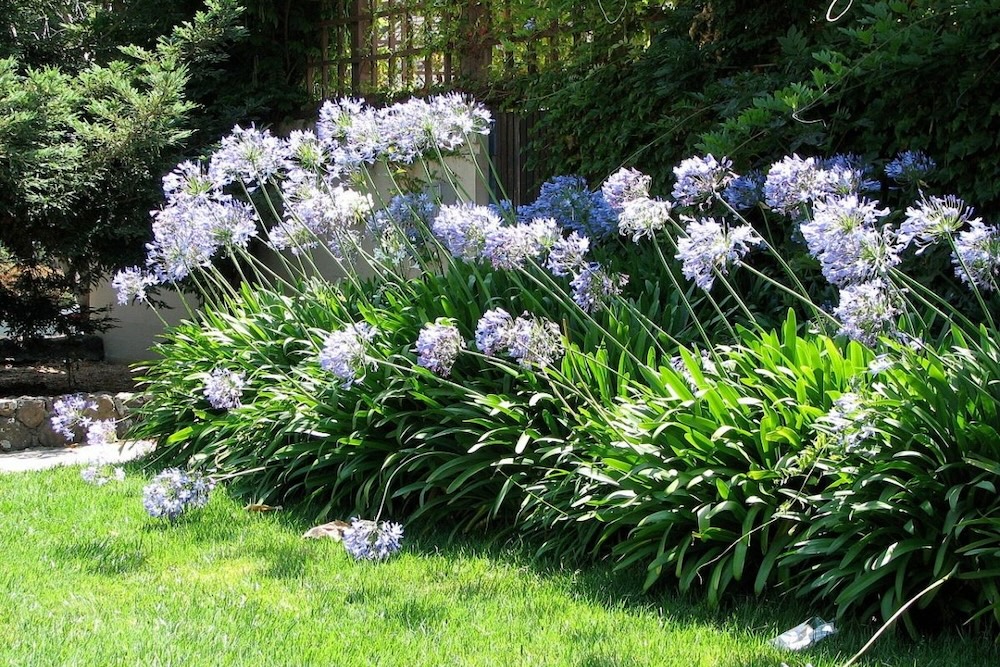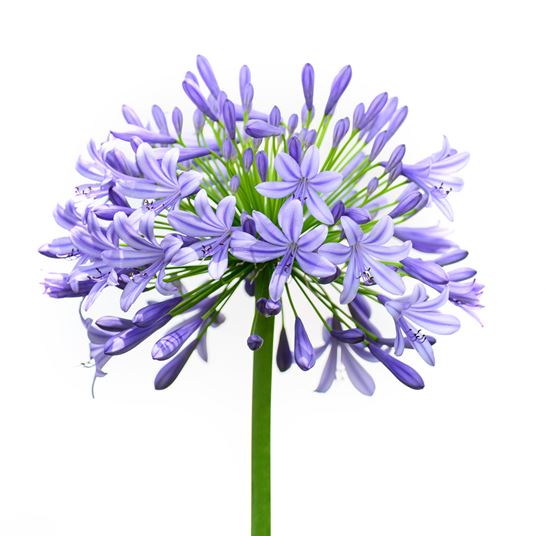Spectacular Agapanthus: Enhancing Your Garden's Charm
Spectacular Agapanthus: Enhancing Your Garden's Charm
Blog Article
Mastering the Art of Agapanthus Treatment: Essential Steps for Healthy And Balanced Growth and Vivid Blossoms
In the realm of horticulture, the farming of agapanthus stands as a fulfilling venture for those who look for to nurture these elegant flowering plants. With their striking flowers and elegant vegetation, agapanthus has captured the interest of gardeners worldwide. Nevertheless, attaining optimum development and vivid blooms calls for a nuanced strategy that incorporates different necessary actions. From choosing the best selection to mastering pruning strategies, the trip towards growing thriving agapanthus plants is multifaceted and holds the crucial to opening the full potential of these herb treasures.

Selecting the Right Agapanthus Variety

When picking the right Agapanthus range for your garden, take into consideration aspects such as climate suitability, bloom color, and growth behavior. Agapanthus, typically called Lily of the Nile or African lily, is available in a variety of shades varying from shades of blue and purple to white. Pick a flower shade that complements your existing garden combination to develop a harmonious landscape. In addition, consider the climate in your area to make certain the Agapanthus variety you select can thrive in your specific problems. Some selections are more forgiving of cool temperature levels, while others choose warmer environments. Recognizing the development habit of different Agapanthus selections is crucial for appropriate placement within your garden. Some ranges have a clumping development habit, ideal for containers or borders, while others have an even more dispersing nature, ideal for ground cover or mass plantings. By thoroughly evaluating these aspects, you can pick the best Agapanthus variety to enhance the beauty of your yard.
Ideal Growing Problems
Considering the optimal environmental demands is essential for effective Agapanthus growing. Agapanthus plants are sensitive to cold temperatures and should be protected from frost throughout winter months.
To ensure healthy growth and dynamic blooms, plant Agapanthus bulbs at a depth of regarding 2-4 inches and space them 8-12 inches apart. Mulching around the base of the plants assists maintain dampness and suppresses weed development.
Watering and Fertilizing Tips
Maintaining proper dampness degrees and giving necessary nutrients are vital aspects in the treatment program for Agapanthus plants. When it concerns watering Agapanthus, it is important to strike a balance. If overwatered, these plants like regularly moist soil but are at risk to root rot. During the expanding period, water deeply as soon as a week, guaranteeing the dirt is well-draining to avoid waterlogging. In hotter climates or throughout periods of dry spell, even site web more regular watering might be essential to keep the dirt uniformly wet. Nonetheless, reduce watering in the winter months to stop waterlogged problems.
Fertilizing Agapanthus is crucial for promoting healthy development and prolific flowers. Apply a balanced fertilizer, such as a 10-10-10 formula, in the very early spring as brand-new growth emerges. By adhering to these watering and feeding tips, you can guarantee your Agapanthus plants flourish and produce vivid, durable blossoms.
Trimming Methods for Agapanthus
Pruning Agapanthus plants at the suitable times and with proper strategies is essential for keeping their wellness and promoting optimum development and flowering. The optimal time to trim Agapanthus is in late wintertime or early spring before new development emerges.
For flowered stems, wait until the blossoms have perished and afterwards trim them back to the base. This not just cleans up the plant's look yet also encourages the growth of brand-new blossom buds. Deadheading spent blossoms can also redirect the plant's power right into creating even more blossoms instead of establishing seeds. Nonetheless, if you desire to gather seeds for propagation, leave some blossoms to dry and mature on the plant.
Remember to make use of clean, sharp tools to make precise cuts and decrease the danger of introducing illness. Agapanthus. Regular pruning will certainly help maintain your Agapanthus looking cool and healthy and balanced while making certain an abundant screen of beautiful blossoms
Handling Usual Insects and Illness
After making certain proper pruning methods for Agapanthus, it is necessary to deal with common bugs and conditions that can influence the health and vigor of these visit this web-site plants. Agapanthus plants are usually durable yet can still fall target to certain problems. One usual insect that affects Agapanthus is the Agapanthus gall midge. This tiny, orange fly lays its eggs in the foliage, causing distorted growth and blossom buds that fail to open. To battle this pest, trim and destroy any type of afflicted plant components and take into consideration utilizing insecticidal soap.
Another usual issue is fungal fallen leave place, which presents as dark lesions on the leaves. To avoid fungal illness, make certain good air my blog circulation around the plants, prevent above watering, and remove any infected fallen leaves without delay. Furthermore, Agapanthus plants can endure from root rot if they are grown in improperly draining soil. To stop this, plant Agapanthus in well-draining dirt and prevent overwatering. By being attentive and taking prompt action versus pests and illness, you can assist your Agapanthus plants prosper and create lively blossoms.

Final Thought
To conclude, mastering the art of agapanthus treatment involves selecting the appropriate range, supplying optimal growing conditions, proper watering and feeding, proper trimming strategies, and addressing usual insects and illness. By following these necessary steps, you can make certain healthy growth and dynamic blooms for your agapanthus plants. Bear in mind to on a regular basis keep track of and keep your plants to promote their overall wellness and long life.
To make certain healthy growth and vibrant flowers, plant Agapanthus light bulbs at a depth of concerning 2-4 inches and space them 8-12 inches apart. By following these watering and fertilizing ideas, you can guarantee your Agapanthus plants thrive and create vibrant, resilient blooms.
One usual parasite that influences Agapanthus is the Agapanthus gall midge. In addition, Agapanthus plants can experience from origin rot if they are grown in badly draining pipes dirt. By complying with these necessary steps, you can guarantee healthy and balanced growth and vibrant blossoms for your agapanthus plants.
Report this page